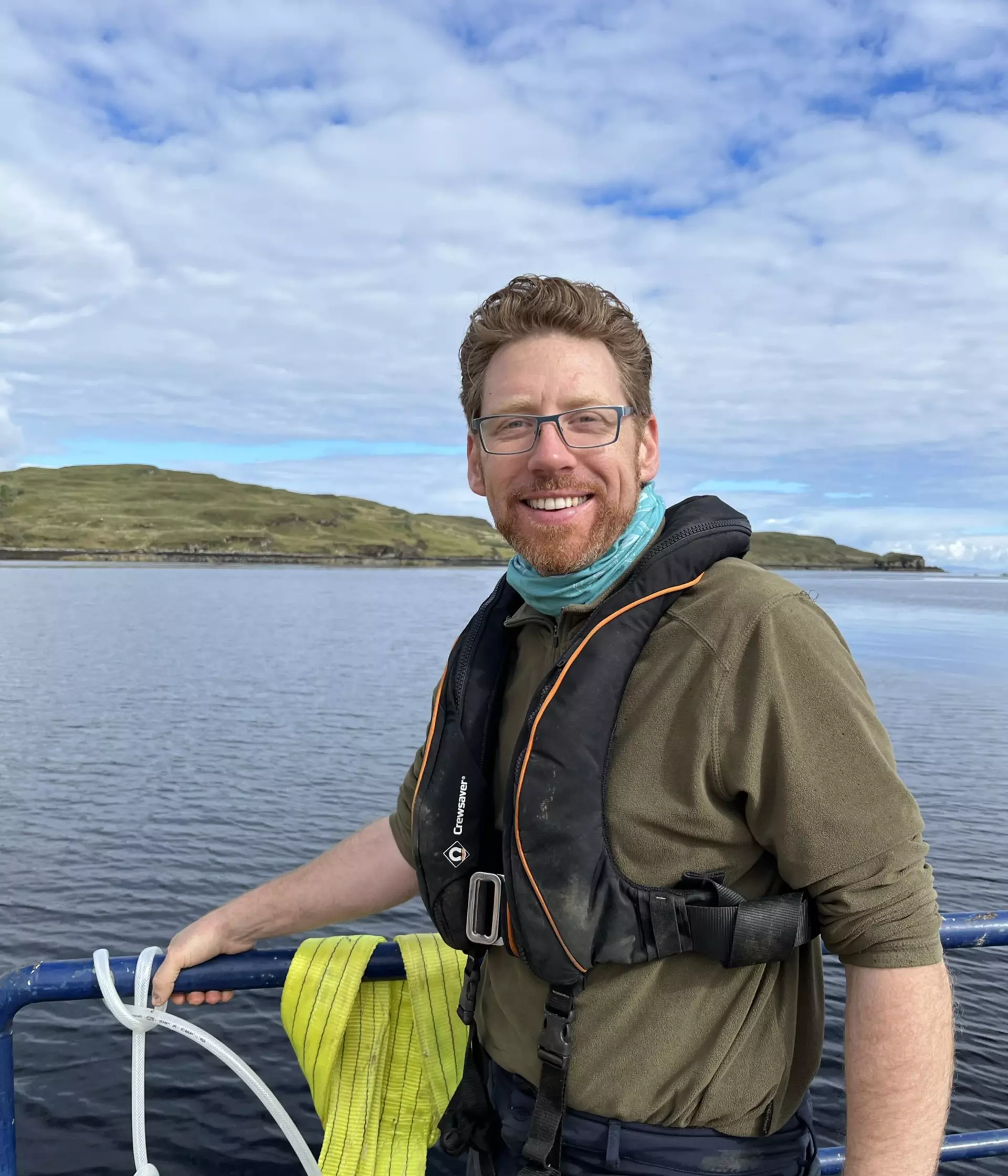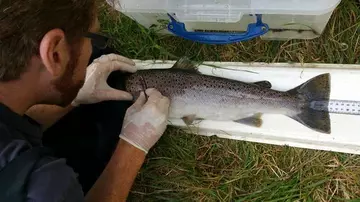
European Eel
Fisheries
Research
My research focusses on the behavioural ecology of migratory fish. I work principally on European eel and brown trout / sea trout, employing acoustic telemetry and sonar technologies in field environments to improve our understanding of fish behaviour. I am particularly interested in the responses of diadromous fish to environmental stimuli (e.g. hydrodynamics, acoustics) and how these can be used to develop more effective fish guidance and passage technologies.
I conduct applied research and have a strong interest in translating findings into real world management applications. Broadly, my work is directed towards developing robust and practical solutions to mitigate for the impacts of anthropogenic structures (e.g. weirs, dams, water pumps and hydropower) on fish populations and facilitate the free movement of migratory fish. I work closely with partners at University College London, relevant public bodies (Environment Agency, Cefas), industry (water and power) and environmental NGOs (Wild Trout Trust, The Rivers Trusts, Atlantic Salmon Trust, Wildlife Trusts).
Research Interests
- Fish behaviour
- Ecohydraulics
- Spatial ecology
- Fish guidance technologies
- Fish passage
- Animal tracking technologies
Current Projects
Sea trout
Understanding movements, barrier passage and habitat use of anadromous and non-anadromous trout in North Norfolk
The importance of salmonids originating from small streams for the wider European stock is poorly quantified, though growing evidence suggests that they make a significant contribution to the genetic diversity, and therefore resilience, of wider populations.

A telemetry study is underway to quantify the origin, distribution and migration characteristics of sea trout within North Norfolk rivers and associated coastal waters. Tracking of tagged individuals within freshwater and estuarine reaches will provide key information on fish movements, including: 1) temporal patterns of sea trout migration, 2) delay caused by structures, 3) migration rate, and 4) habitat use during freshwater and estuarine phases. Genetic and stable isotope analyses are being applied to determine the contribution of seatrout from small streams to the wider stocks.

Findings will provide regulatory authorities with the knowledge required for sustainable management of stocks, i.e. provide evidence for the Net Limitation Order, inform on the requirement for marine conservation zones, determine key spawning grounds, and identify barriers limiting migration.
Collaborators: Environment Agency, Atlantic Salmon Trust, Wild Trout Trust, Norfolk Rivers Trust, Buxton Conservation Trust and University College London
Find out more about the project
Anguillid Eel
Eel response to flow cues in disconnected waterbodies
Large disconnected waterbodies such as drinking water reservoirs hold significant stocks of European eel but there is often no feasible migration route by which adult eels can escape to undertake their seaward spawning migration. Given the importance of hydrodynamic cues in eel behaviour, the changeable and intermittent flow patterns present in reservoirs may influence eel distribution and provide attraction or deterrent to input and output sources.
Acoustic telemetry is being used to determine the distribution, movement patterns and residency characteristics of adult eels within a large reservoir. Eel data will be analysed in relation to concurrent environmental data such as input and output flows to quantify the relative influence of each on eel movement.
Greater understanding of eel distribution and response to flow cues in large lentic waterbodies will help inform the management of such populations, for example, by identifying screening priorities at pumps, enhancing trap and transport schemes, and informing adaptive management measures e.g. using flow cues to enhance the efficacy of out migration routes (bypasses).
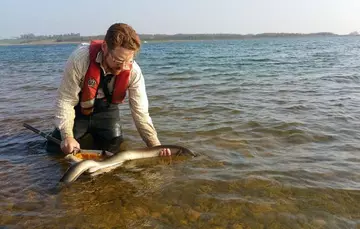
Eel response to flow cues - the potential for developing effective guidance
Eels respond to the hydrodynamic gradients created at structures, for example rejecting areas of velocity acceleration and such responses may be exploited to guide eel away from deleterious areas (e.g. hydropower intakes and pumping stations) and towards safe passage routes.
Field experiments are being conducted to test the potential of flow manipulation to deflect eel on their approach to a pumping station. Acoustic positioning telemetry and sonar imaging technology are employed to monitor the fine scale behaviour of adult eel on the approach to the flow source. Eel swim paths generated from the positioning data will be analysed in relation to mapped flow fields to quantify how eels responded and determine if this approach has potential to work in other real world situations to guide eels towards safe passage routes.

Assessing the passability of structures to eel
An ongoing project is examining the movement patterns of European eel as they attempt to ascend and descend manmade river structures including flow gauging weirs and tide gates on the Rivers Stiffkey and Glaven in Norfolk. PIT telemetry is being used to track eel, enabling identification of route choice, passage efficiency, determine temporal variation, and explore the influence of physical and environmental parameters on barrier passage success.
Data will facilitate the prioritisation of barriers for future mitigation measures such as the installation of eel passes and modification of tide gates to enhance passage at key migration periods.
Collaborators: Environment Agency, Water Management Alliance, Cefas, water companies, Norfolk Rivers Trust and River Glaven Conservation Group.
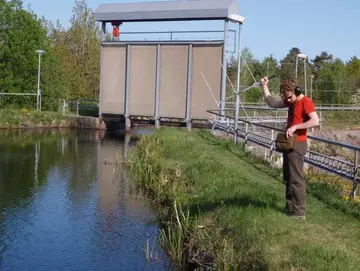
Tracking the movement and migration behaviour of freshwater eel in the Philippines: the importance of fish sanctuaries
This work builds on a previous ZSL project in the Cagayan River system, Philippines, that provided the first baseline monitoring data on the three species of tropical eel found there (Anguilla bicolor, A. luzonensis and A. marmorata). As part of the project, a number of protected areas, or fish sanctuaries, were developed within the system in collaboration with local communities to provide protection for flagship species, including anguillid eels.
As part of an acoustic telemetry study, we are tracking the movement of eels within and out of the fish sanctuaries to understand patterns of residency and habitat use. It is hoped that additional receivers placed downstream of the fish sanctuaries, in the main Cagayan River, will also provide information on the timing of the eel’s seaward spawning migration.
A key part of the wider project is engaging with the local community. Local groups including students from local schools, local village (Barangay) officials, fisher folk, local residents, tourist operators and government agencies are actively engaged with the project and are committed to providing assistance with the installation and maintenance of telemetry arrays and capture of study fish.
Findings will contribute directly to assessments of the effectiveness of the newly created protected areas. Further, because our understanding of these tropical eel species is generally very poor, the telemetry data will provide new insights into their movement and migration behaviour; information that is crucial for the development of effective conservation strategies.
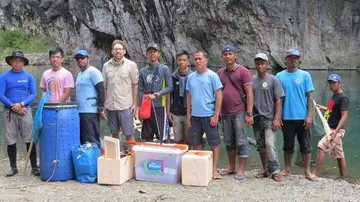
Teaching
I guest lecture about anthropogenic impacts on migratory fish populations for the University College London MSc Aquatic Science and the Royal Veterinary College MSc Wild Animal Health and Wild Animal Biology courses. I also contribute to the UCL MSc Aquatic Science programme field course
Curriculum Vitae
- 2022-present: Research Fellow
- 2015-2022: Research Associate, Institute of Zoology.
- 2012-2015: Post-doctoral Researcher, International Centre for Ecohydraulics Research (ICER), University of Southampton, UK
- 2008–2012: PhD, International Centre for Ecohydraulics Research (ICER), University of Southampton, UK
- 2008–present: Technical Advisor - Migratory Fish, Environment Agency, UK
- 2006–2008: Team Leader, Ecological Appraisal, Environment Agency, UK
- 2002 ̶ 2006: Ecological Appraisal Officer (Fisheries), Environment Agency, UK
- 1999–2002: BSc (Hons) in Aquaculture and Fisheries Management, Sparsholt University College, UK
